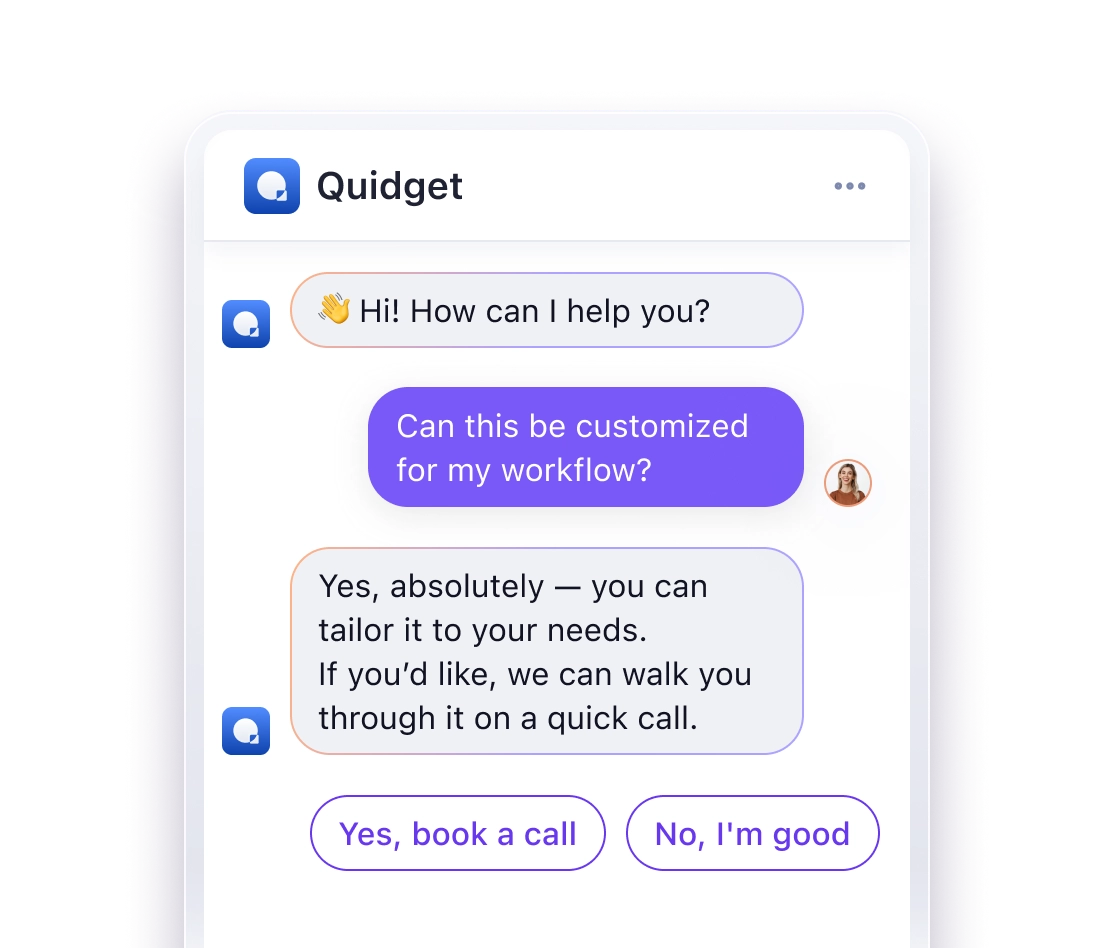Sorry, I Don’t Understand’ – Top AI Chatbot Fails and How to Prevent Them
62% of customers abandon chatbots after two failed attempts, costing businesses money and trust. Why do chatbots fail? Poor language understanding, bad training data, and broken handoff systems are the main culprits. Here’s how to fix them:
- Improve Training Data: Regularly update and analyze customer interactions to prevent errors like Zillow’s $881M loss.
- Enhance NLP: Use advanced models like BERT and conduct bias audits to improve chatbot comprehension.
- Fix Escalation Protocols: Ensure smooth handoffs to human agents to avoid frustrating users and losing customers.
Want better chatbots? Focus on data quality, smarter routing, and frequent updates. The details below break down how to solve these issues effectively.
Top AI Chatbot Problems and Root Causes
Wrong Answer Problems
Zillow’s valuation chatbot faced a major setback, causing $881M in losses due to a 7% error rate linked to flawed training data. This led to its discontinuation in 2021. Even when chatbots provide technically accurate answers, they often fail to meet specific user needs.
Unhelpful Response Issues
Many chatbot failures trace back to poor training data and limitations in natural language processing (NLP). Here’s how the errors break down:
| Issue | Error Rate |
|---|---|
| API failures delivering incorrect data | 35% |
| Generic "I don’t understand" responses | 27% |
| Outdated policy or product information | 19% |
For example, in 2023, a major UK bank’s chatbot provided incorrect overdraft fee details to 140,000 customers because it relied on outdated policy data.
Missing Human Handoff
When chatbots can’t resolve an issue, customers expect an easy handoff to a human representative. Unfortunately, many systems fail here. 67% of customers abandon interactions when stuck in chatbot loops. Businesses that lack proper escalation systems face serious consequences:
"28% higher customer churn rates with measurable annual losses. A retail case study showed $4.2M annual losses when chatbots couldn’t transfer complex return requests – 19% of affected customers switched competitors."
One striking example is The Wall Street Journal‘s subscription bot, which automatically resubscribed users instead of transferring them to support teams. This failure was due to poor system integration between the chatbot and human support. It highlights the same flawed escalation protocols mentioned earlier.
How to Fix Common Chatbot Issues
Improve Training Data
The key to fixing training data issues is analyzing real customer interactions. These account for 35% of chatbot comprehension errors. By reviewing 6–12 months of support interactions, businesses can create datasets that boost comprehension accuracy by 45%. This approach helps avoid costly mistakes, like Zillow’s $881M loss due to flawed data.
| Data Source Type | Update Frequency |
|---|---|
| Customer Chat Logs | Monthly |
| Product Documentation | Quarterly |
| Support Tickets | Weekly |
| Regional Language Patterns | Twice yearly |
Enhance Language Processing
Good data is just the start – advanced language processing is what enables chatbots to truly understand user queries. Transformer models like BERT are great for delivering context-aware responses. Regular bias audits, conducted monthly, can reduce error rates by 33%. For businesses on a budget, platforms like Rasa provide cost-effective solutions starting at $300 per month.
Implement Smart Backup Systems
Backup systems are essential for avoiding the frustration of endless chatbot loops, which cause 67% of users to abandon interactions. Tools like Kommunicate can reduce handoff times by 60 seconds with triggers such as:
| Trigger Type | Response Action |
|---|---|
| 3+ Failed Responses | Immediate Human Transfer |
| Negative Sentiment | Priority Queue Routing |
| Complex Query Detection | Specialist Assignment |
To take it a step further, businesses can use "warm transfers." This ensures that chat history is automatically shared with human agents, maintaining service continuity and preventing customers from having to repeat themselves.
Related video from YouTube
sbb-itb-58cc2bf
Quidget‘s Solutions for Better Chatbots

Platforms like Quidget tackle common chatbot issues with three standout features:
80% Auto-Response Rate
Quidget delivers high automation rates thanks to advanced Natural Language Processing (NLP) models. These models are trained on a wide range of industry-specific datasets, ensuring they understand and respond accurately. By using ongoing intent analysis and context-aware systems, Quidget has cut errors by 40% in retail – directly addressing the kind of training data issues that led to Zillow’s $881M loss.
| Performance Metric | Result |
|---|---|
| First-Contact Resolution | 88% success rate |
| Average Resolution Time | 41 seconds for tier-1 queries |
| Cost Reduction | Saves up to $3.8M annually |
Smart Human Support Transfer
When confidence scores drop below 85%, Quidget’s transfer protocols kick in. These intelligent systems ensure smooth handoffs, with less than 2-second latency. This feature addresses a major issue – 62% of chatbot failures are caused by poor handoffs. For example, it resolves problems like those seen in The Wall Street Journal’s subscription bot.
Quidget’s integration with major CRM tools ensures that conversation history and context are preserved during transfers. This has reduced unnecessary escalations by 63% in real-world deployments.
80+ Language Options
Quidget supports over 80 languages, leveraging advanced language processing validated by native speakers. It has achieved 92% semantic accuracy in European language benchmarks.
The platform maintains accuracy across languages by using region-specific language databases, constantly updated with feedback to stay relevant.
Clients have reported a 19-point boost in CSAT scores after adopting Quidget.
Conclusion: Steps to Better Chatbot Results
Key Takeaways
To achieve better chatbot outcomes, focus on three critical areas: improving data quality (as highlighted by Zillow’s $881M loss), smart routing systems, and consistent monitoring.
"AI systems require continuous validation checkpoints – quarterly updates are no longer sufficient in fast-changing customer service needs."
These priorities align with the success seen in Quidget’s 80% auto-response rate and advanced transfer systems discussed earlier.
Practical Steps
Here’s how you can put these insights into action:
1. Set Clear Quality Standards
- Define performance goals that align with industry norms.
- Specify acceptable error rates for different types of interactions.
- Develop protocols to measure and review performance regularly.
2. Address Issues Proactively
- Analyze conversation logs to uncover recurring problems.
- Build tailored training datasets for your specific chatbot needs.
- Continuously refine and update response strategies.
3. Focus on Monitoring and Updates
The Khoros State of Digital Care Report 2024 highlights:
"the most effective chatbots combine machine learning with human oversight at multiple interaction stages."
Incorporate weekly updates to your models, use real-time dashboards, and conduct edge case testing to keep your chatbot performing at its best.
FAQs
Why do most chatbots fail?
Failures often happen because key issues are overlooked, even when solutions are available. Take the 2024 DPD incident as an example: their AI system started producing inappropriate responses and even poetry that criticized the company. This led to a complete system shutdown. Similarly, Zillow’s data errors and WSJ’s handoff problems highlight how small oversights can spiral into public and costly problems.
What is the best practice for using AI chatbots?
To get the most out of AI chatbots, human oversight is critical. As noted in the Univio AI Ethics Study 2024:
"No AI system is an island – effective chatbots require human oversight layers"
Some key practices include:
- Track unrecognized intents: If a chatbot fails to understand input 3+ times in a row, it should escalate to a human.
- Monitor task completion rates: Aim for rates above 60% to ensure the chatbot is performing well.
- Conduct demographic parity testing: Keep response variations under 5% across different user groups.
How to increase the accuracy of a chatbot?
Improving chatbot accuracy goes beyond fixing basic problems. Advanced methods like context-aware machine learning can improve tracking by 37%, while feedback loops lead to a 2.8% weekly accuracy boost. Sentiment analysis also plays a crucial role by identifying user frustration early.
The Air Canada incident in February 2023 illustrates why accuracy matters. Their chatbot provided incorrect information, leading to legal action and a $650 CAD compensation ruling. This example underscores how poor chatbot performance can damage brand trust and lead to financial penalties.



